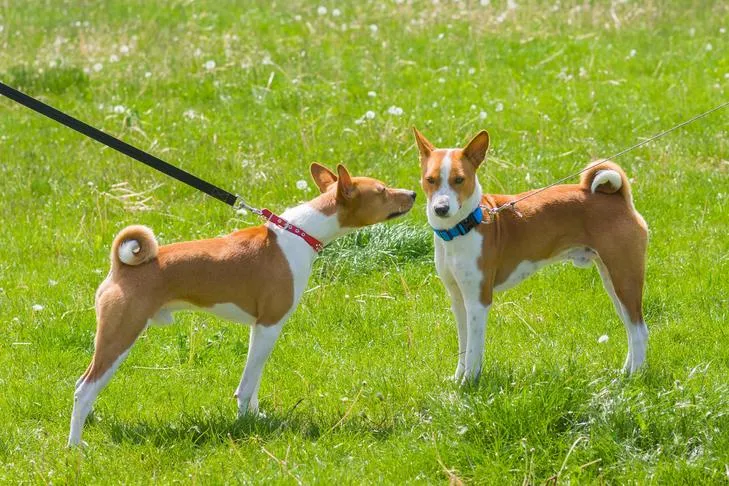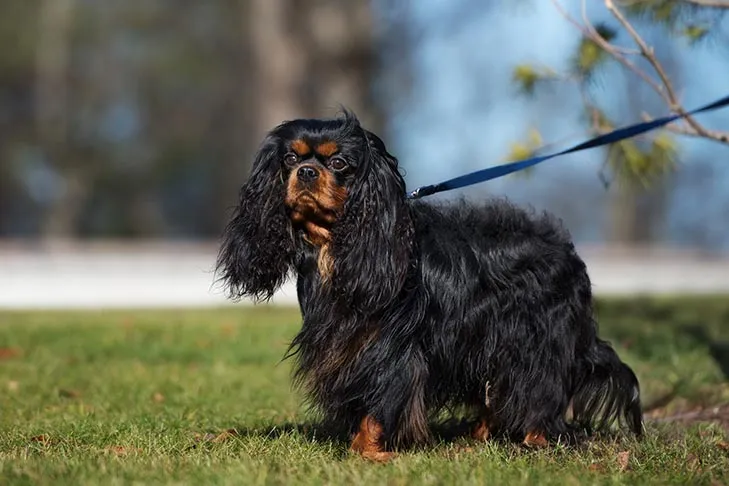Taking your puppy for a walk should be a joyful and bonding experience, not a tug-of-war. However, many puppy owners quickly discover that their adorable little companion has an astonishing strength and determination to pull on the leash, dragging them down the street. This common behavior isn’t just annoying; it can be unsafe for both you and your growing pup, potentially leading to injuries or dangerous situations if your puppy escapes or encounters an unexpected hazard. Learning how to Train Puppy To Stop Pulling On Leash is a fundamental step in responsible pet ownership and key to enjoyable walks for years to come.
While leash pulling is a widespread challenge for puppies and dogs of all ages, the good news is that it’s a learned behavior that can be corrected with simple, consistent training techniques. By understanding why puppies pull and adjusting your approach during walks, you can transform frustrating outings into pleasant strolls. This guide will walk you through 10 essential tips to help your puppy learn polite leash manners, ensuring that you and your pup can walk together harmoniously. Mastering loose leash walking not only enhances your walks but also strengthens your bond and sets a foundation for a well-behaved companion. If you’re looking for more general guidance on how to get your puppy to walk confidently, our comprehensive resources can provide further support.
Understanding Why Puppies Pull on Leash
Puppies pull on the leash for several reasons, often driven by natural instincts and a lack of understanding about human expectations. For a young pup, the world is a fascinating place filled with new sights, sounds, and an overwhelming array of smells. Their instinct is to explore and reach these stimuli as quickly as possible. They haven’t yet learned that pulling on the leash actually hinders their progress. Furthermore, if pulling sometimes gets them to where they want to go (even if just a few steps), they quickly learn that this behavior is rewarded. Addressing this requires patience, consistency, and positive reinforcement to teach them that polite walking is far more rewarding.
Essential Tips to Train Your Puppy to Stop Pulling on Leash
Successfully teaching your puppy to walk politely on a leash requires a combination of patience, positive reinforcement, and clear communication. Here are 10 effective strategies to help you train puppy to stop pulling on leash.
1. Always Reward Polite Leash Walking
Never underestimate the power of positive reinforcement. Puppies, like all dogs, are more likely to repeat behaviors that earn them a reward. When your puppy is walking beside you with a loose leash, consistently reinforce that behavior with praise, a small treat, or even a moment to sniff something interesting. If you only react when your puppy pulls, you’re missing countless opportunities to solidify good habits. In the early stages of puppy leash training, reward heavily and frequently. As your puppy improves, you can gradually reduce the food rewards and substitute them with “life rewards” like the chance to investigate a patch of grass or greet a friendly passerby. This strategy is central to teaching your dog not to pull effectively.
2. Implement the “Stop and Go” Method (Don’t Reward Pulling)
Your puppy pulls because they want to move forward. If you allow them to continue walking while they’re pulling, you’re inadvertently rewarding the very behavior you want to stop. The key is to make pulling unproductive. The moment your puppy tightens the leash, stop immediately. Plant your feet firmly and become a tree. Wait for your puppy to either return to your side or, at the very least, loosen the tension on the leash. Only when the leash is slack do you resume walking. This teaches your puppy that pulling stops progress, while a loose leash allows them to continue their walk.
 Two Basenji dogs meeting in a grassy field, one on a leash, demonstrating careful outdoor interactions.
Two Basenji dogs meeting in a grassy field, one on a leash, demonstrating careful outdoor interactions.
3. Wait for a Loose Leash Before Resuming
After stopping due to pulling, how do you know when it’s okay to start again? Wait for a truly loose leash. The leash should hang in a ‘J’ shape, indicating no tension. Crucially, your puppy should also redirect their attention back to you, even if it’s just a glance. Initially, this might take a while, and you might feel like you’re stopping every few steps. Be patient. Eventually, your puppy will look back, wondering why you’ve stopped. At that precise moment, praise them, offer a treat at your side, and then calmly continue walking. This repetition reinforces the idea that a slack leash and your attention lead to forward movement.
4. Utilize Life Rewards for Motivation
Walks are more than just bathroom breaks; they are enriching experiences for your puppy, providing physical exercise and mental stimulation. You can leverage these enjoyable aspects to boost your training. “Life rewards” are everyday things your puppy loves, such as sniffing a bush, greeting a friendly person, or exploring a new scent. If your puppy walks politely for a short distance (e.g., 10 feet) without pulling, reward them by allowing them a few minutes to engage in one of these desired activities. These bonus rewards significantly reinforce that polite walking behaviors pay off, making your puppy more eager to cooperate.
5. Set an Appropriate Walking Pace
Puppies often have more energy and move at a quicker pace than humans. They naturally want to get moving! Part of the reason a puppy pulls on leash is simply because they want to go faster. To help your puppy feel more engaged and less inclined to pull, try to maintain a comfortable but brisk walking pace for both of you. While you can certainly teach your puppy to match your slower speed over time, a quicker tempo during initial training can make it easier for them to learn not to leash pull. Adjusting your pace can significantly contribute to effective puppy leash training.
6. Maintain Absolute Consistency
Consistency is paramount when you train puppy to stop pulling on leash. It can be tempting to let your puppy pull when you’re in a rush, it’s cold outside, or you just want them to quickly relieve themselves. However, every time you allow your puppy to pull, you are reinforcing the unwanted behavior and setting your training back. You must be consistent with your no-pulling rule in every situation. If you’re short on time, consider letting your puppy do their business in the yard or at the curb, saving structured walks for when you have enough time to dedicate to training. For scenarios like this, understanding successfully potty training your puppy can be very helpful.
 A beagle puppy on a leash, tugging forward to sniff the ground during an outdoor walk.
A beagle puppy on a leash, tugging forward to sniff the ground during an outdoor walk.
7. Keep Training Sessions Short and Positive
Training a determined puppy who loves to pull can be frustrating. Avoid pushing your puppy to the point where both of you become discouraged. Young puppies, in particular, have short attention spans. Keep your training sessions brief, upbeat, and fun – perhaps just a few minutes, several times a day. Your goal isn’t to cover a certain distance initially, but rather to achieve loose leash walking for even a short stretch, like to the end of the driveway or the neighbor’s house. Ending on a positive note, even after a small success, builds confidence and maintains your puppy’s enthusiasm for learning.
8. Be an Engaging Walking Partner
For your puppy, the world is a sensory overload, full of enticing distractions that make them want to pull. If you’re disengaged, perhaps focused on your phone, your puppy has little reason to pay attention to you. Become the most interesting thing on the walk! Talk to your puppy, offer sudden changes in direction, take quick training breaks for a “sit” or a “hand target,” or even play a quick game. This keeps your puppy focused on you, constantly wondering what exciting thing you’ll do next, making them less likely to pull away.
9. Cultivate a Calm Demeanor
Walks can bring about various emotional situations, whether it’s the excitement of seeing a friendly face or the fear of a loud noise. Puppies are incredibly adept at reading human emotions, and your mood can transmit down the leash, impacting their behavior. If you’re stressed or anxious, your puppy might become more excited or fearful, intensifying their pulling or anxiety. To help your puppy stay calm and focused, it’s crucial that you remain calm yourself. Projecting a relaxed attitude signals to your puppy that there’s nothing to be overly excited or worried about, making them more receptive to your commands and better able to behave appropriately.
 A fluffy Cavalier King Charles Spaniel puppy wearing a harness and leash, looking alert outdoors.
A fluffy Cavalier King Charles Spaniel puppy wearing a harness and leash, looking alert outdoors.
10. Proactively Manage Distractions
When confronted with distractions like other dogs, squirrels, or unfamiliar people, even a well-trained puppy can forget their manners and start pulling. Your puppy might pull to investigate or, conversely, pull to escape if they’re nervous around strangers. In these moments, leash etiquette often goes out the window. To prevent this, proactively engage your puppy before they fixate on the distraction. Offer treats calmly, ask for a simple command like “sit” or “watch me,” or play a quick game to redirect their focus to you. Teaching your puppy the “watch me” cue is particularly useful, as it helps you control their gaze and keep their attention on you as the distraction passes. Being prepared and proactive is key to maintaining loose leash walking in challenging environments. This strategy is also helpful when dealing with specific behavioral issues, such as trying to understand how to train your dog to be a comfort dog, where calm focus is essential.
Conclusion
Teaching your puppy to walk politely on a leash is one of the most rewarding aspects of early training. It transforms mundane walks into enjoyable adventures and strengthens the bond between you and your furry companion. By consistently applying these 10 tips – rewarding good behavior, stopping when pulling occurs, utilizing life rewards, maintaining a brisk pace, ensuring absolute consistency, keeping sessions short and fun, staying engaged, remaining calm, and proactively managing distractions – you’ll empower your puppy to understand the expectations of loose leash walking. Remember, patience is a virtue, and every small step forward is a victory. With dedication, your puppy will soon be a joy to walk, making every outing a pleasant experience for both of you.
References
- AKC GoodDog Helpline (General dog training principles and advice adapted)
